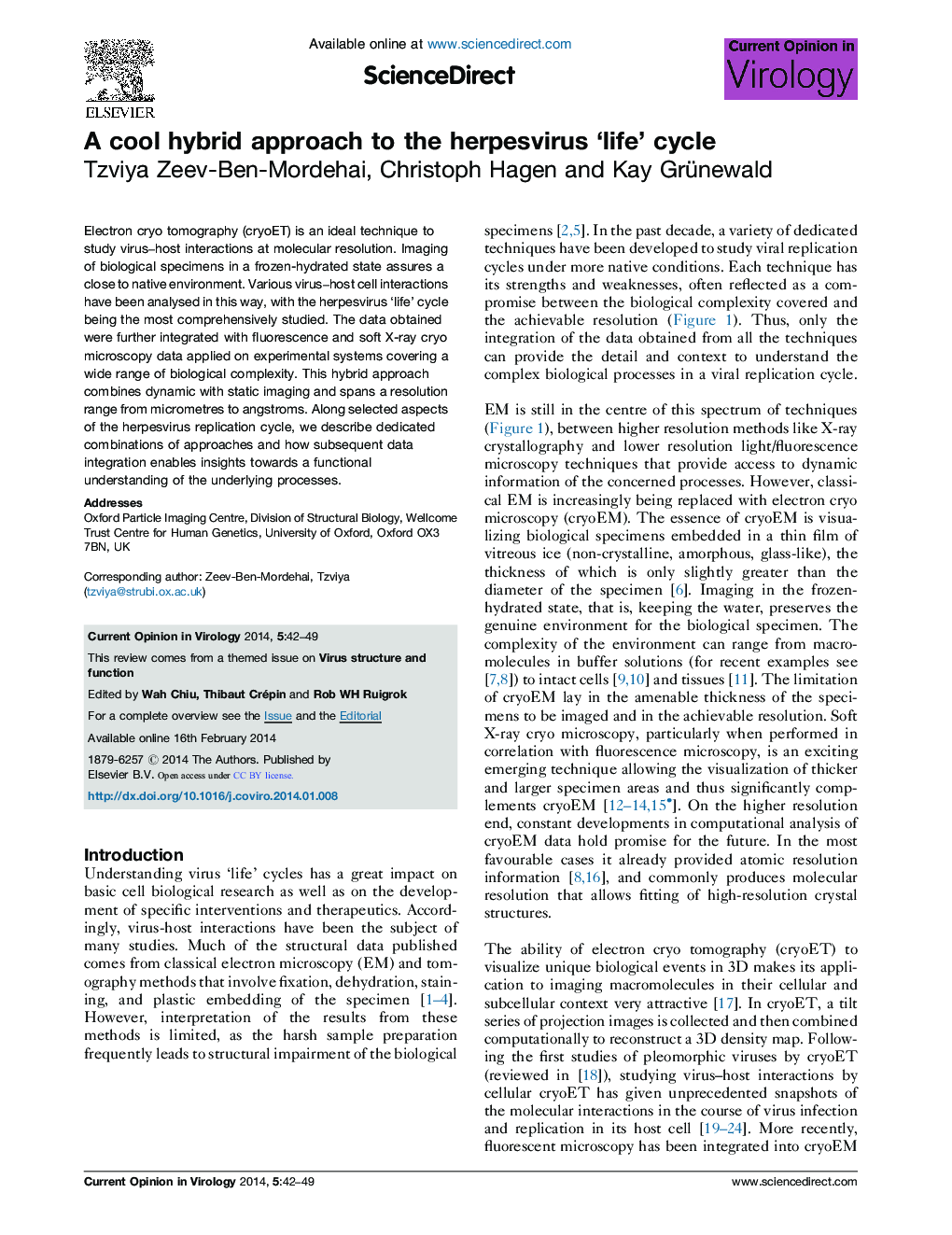| Article ID | Journal | Published Year | Pages | File Type |
|---|---|---|---|---|
| 5806820 | Current Opinion in Virology | 2014 | 8 Pages |
â¢Studying virus 'life' cycle in native conditions requires a hybrid approach.â¢Fluorescence, X-ray and electron cryo microscopy combines dynamic with static imaging.â¢This covers biological complexity with resolution from micrometres to angstroms.â¢Integration of data provides insightful understanding of herpesvirus replication.â¢Outlook: developments in sample thinning, instrumentation and computational analysis.
Electron cryo tomography (cryoET) is an ideal technique to study virus-host interactions at molecular resolution. Imaging of biological specimens in a frozen-hydrated state assures a close to native environment. Various virus-host cell interactions have been analysed in this way, with the herpesvirus 'life' cycle being the most comprehensively studied. The data obtained were further integrated with fluorescence and soft X-ray cryo microscopy data applied on experimental systems covering a wide range of biological complexity. This hybrid approach combines dynamic with static imaging and spans a resolution range from micrometres to angstroms. Along selected aspects of the herpesvirus replication cycle, we describe dedicated combinations of approaches and how subsequent data integration enables insights towards a functional understanding of the underlying processes.
Graphical abstractDownload full-size image
